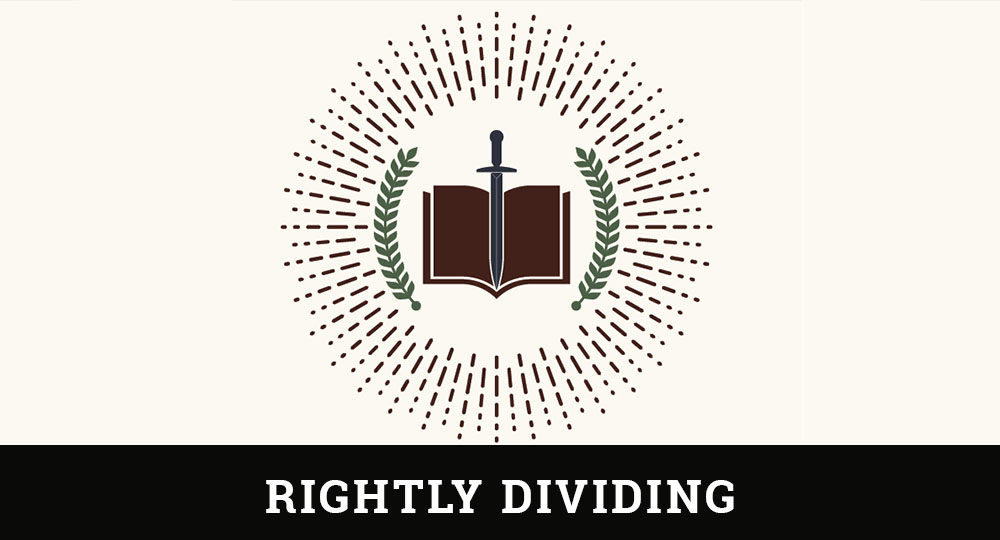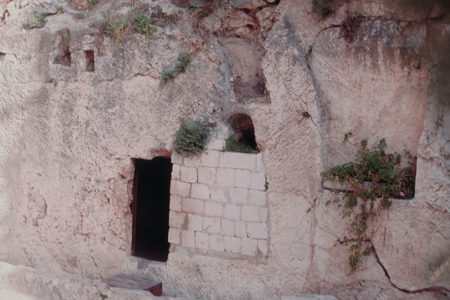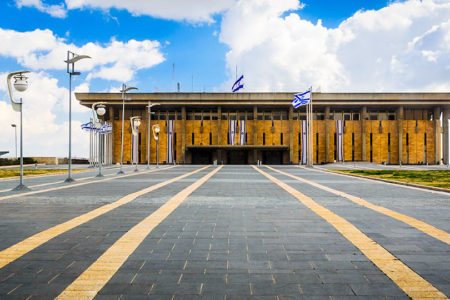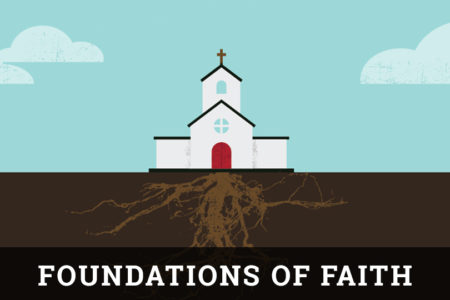The Scroll With Seven Seals Revelation 5:1–4
In Revelation 4, John presented a description of what he saw and heard in his heavenly vision. He saw God the Father seated on His throne and heard the host of heaven offering Him continual worship. In chapter 5, the apostle narrowed his focus to a scroll in the right hand of God and a search for one qualified to open its seals and reveal its message. This chapter is extremely important because it provides a fitting introduction to the revelation of God’s program to be unfolded in chapters 6 to 22.
The Sealed Scroll
John wrote, “And I saw in the right hand of him that sat on the throne a scroll written within and on the back, sealed with seven seals” (v. 1). In the first century, scrolls were made of papyrus and sheep or goat skin sewed together, and often averaged 15 feet in length. The scroll was written on both sides, indicating a full or comprehensive message.
This scroll had “seven seals” (v. 1). It was common in the first century for a person in authority to seal an important document so that its contents would remain secret. Roman law required a last will and testament to be sealed seven times, as illustrated in the wills of Caesar Augustus and Emperor Vespasian.1 Such documents were sealed with wax or clay and could be opened only by a qualified person.
What does the content of the scroll represent? Various answers have been given to this question. Some believe it represents the New Covenant of the promised Kingdom. Others teach that it is a testament or will assuring believers that they have an inheritance reserved for them by God. Another identifies it as the Lamb’s book of life mentioned numerous times in the book of Revelation. Still others view it as God’s redemptive program predicted in the Old Testament and fulfilled in the New Testament. Many believe that it represents Christ’s title deed to planet Earth. Although the last view is partially true, the scroll’s contents represent much more. Another view asserts that the scroll represents a history of the future. It reveals the judgments of God to be poured out on the earth, Christ’s Second Coming to rightfully inherit and implement the title deed of redemption to planet earth, and His righteous rule in the Millennial Kingdom. This last view best describes the scroll’s contents.2
Sorrowful Search
John saw “a strong angel … with a loud voice” (v. 2) making a proclamation in heaven. Some have identified the angel as Gabriel (cp. Dan. 8:16; 9:21; Lk. 1:19, 26). Others believe he is the archangel Michael, who will play a major role in end-time events (Dan. 12:1–3). The text provides no indication of the angel’s identity. The loud sound of the angel’s voice, vibrating throughout heaven, denotes authority, urgency, and the importance of what he is about to announce.
The angel’s proclamation is in the form of a question: “Who is worthy to open the scroll, and to loose its seals?” (v. 2). After a universal search, “no man in heaven, nor in earth, neither under the earth [the underworld], was able to open the scroll, neither to look on it [i.e., look into its contents]” (v. 3).
John’s response was sorrowful. He said, “And I wept much, because no man was found worthy to open and to read the scroll, neither to look on it” (v. 4). This implies that John continually wailed in an uncontrollable, loud voice. Scholars have proposed three reasons for the apostle’s sorrow. Some believe he wept over the moral inability of mankind to open the scroll. Others believe he wept because the world would never know the contents of the scroll—“things which must be hereafter” (4:1). Still others believe he wept because, without the scroll being opened, God’s program would not be fulfilled.3 Although the third answer seems the most reasonable, the text simply states that he wept because “no man was found worthy to open and to read the scroll.”
Immediately an elder consoled John and commanded him, “Weep not” (lit., stop weeping), because one had been found “to open the scroll, and to loose its seven seals” (v. 5). The elder’s words turned John from sorrow to joy.
The Savior Takes the Scroll
Three descriptions are given for the one who is qualified to open the seven-sealed scroll. First, he is “the Lion of the tribe of Judah” (v. 5). This reference originated in Genesis 49:9, where Judah was called a lion. The lion is considered king of the beasts because of his majestic dignity, strength, courage, and ability to rule over his domain. Christ is from the tribe of Judah (Mt. 1:2; Heb. 7:14)—majestic and strong, and, after His Second Coming, He will reign as King over the earth.
Second, the one qualified to open the scroll is from “the Root of David” (v. 5; cp. 22:16). This is a reference from Isaiah 11:1, 10, linking Christ to the Davidic line (cp. 2 Sam. 7:12–16). But Christ is greater than His father David (Mt. 22:41–46) and will one day sit on David’s throne to rule in the Kingdom Age (Lk. 1:32–33).
Third, the one qualified to open the scroll is identified as “a Lamb” (v. 6). The Lamb is Christ, pictured in three ways:
- The Lamb is standing in “the midst of the throne” (v. 6). Christ has stepped down from His throne at the Father’s right hand and moved in front of God the Father to receive the scroll (v. 7).
- The Lamb looks as if it “had been slain” (v. 6), although it is still standing. Christ is often portrayed in the New Testament as a slain Lamb (Jn. 1:29; Acts 8:32; 1 Pet. 1:18–19; Rev. 13:8) who still possesses the scars of His death (the crucifixion).
- The Lamb has “seven horns and seven eyes, which are the seven spirits of God sent forth into all the earth” (v. 6). This is a picture of Christ in the fullness of His omnipotence, omniscience, and omnipresence. Twenty-eight times in the book of Revelation Christ is referred to as a Lamb.
The symbols of a Lamb and a Lion seem to be incongruous, but in reality they complement each other, portraying Christ’s vicarious redemptive work on behalf of mankind and His victorious resurrection and rule. The elder announced that the one qualified “hath prevailed to open the scroll, and to loose its seven seals” (v. 5). The word prevail means to overcome, to conquer, or be victorious. Christ secured the right to open the scroll based on His Messianic office, holiness, and redemptive death on the cross.
Christ stepped forward “and took the scroll out of the right hand of him that sat upon the throne” (v. 7). He alone has the credentials and is qualified to implement God’s wrath and redemptive program recorded in the sealed scroll.
There is a parallel between Christ’s qualification to take the scroll and loose its seals with that of the kinsman-redeemer in the Old Testament. Like the kinsman-redeemer, Christ paid the redemptive price to regain the title deed to man’s lost inheritance. In the future, He will take possession of His inheritance (planet earth) and exercise sovereign rule over it.4
Song of Salvation
When Christ took the scroll, “the four living creatures and four and twenty elders fell down before the Lamb” (v. 8) in worship. This is evidence that Christ is God, for heavenly beings would never worship anything less. The elders possessed “harps, and golden bowls full of incense, which are the prayers of saints” (v. 8). Harps were used in the Old Testament (Ps. 33:2; 98:5; 147:7) and in heaven (Rev. 14:2; 15:2) to offer praise and adoration to God. In the Old Testament Tabernacle and Temple, the altar of incense stood next to the veil in the center of the holy place, separating it from the holy of holies where God manifested His presence. The high priest burned incense on the altar, and it ascended to God, symbolic of the prayers of God’s people (Ps. 141:2). The same is true in this instance (Rev. 8:3–4).
The heavenly host sang “a new song” (v. 9) to the Lamb, celebrating His redemptive work. The word new does not mean new in time or origin, but new in the sense of its nature—something previously unknown and unprecedented. What Christ accomplished in redemption was superior in value to the Old Testament revelation. A new work of redemption calls for a new song. This new song revealed five marvelous insights:
- The Redeemer is “worthy” (v. 9) to open the sealed scroll on the basis of His sacrifice. In being “slain” (v. 9), He opened the way for worldwide redemption.
- The ransom price was paid through His blood (v. 9). Worthiness is not based on mankind’s performance but on Christ’s personal blood sacrifice (1 Pet. 1:18–19), which made it possible for God’s grace and mercy to be manifested to mankind.
- A representative group “out of every kindred, and tongue, and people, and nation” (v. 9) were redeemed.
- As a result of mankind’s redemption, God has formed the church into a royal “kingdom of priests” (v. 10; 1 Pet. 2:9).
- The church will rule and “reign on the earth” (v. 10) with Christ during the Millennial Kingdom. No wonder heaven breaks out in praise to the Lord, who has provided all this for His creation.
This introductory section of the second vision concludes with a revelation of heavenly praise pouring forth from creation. The participants are “many angels … living creatures … elders … ten thousand times ten thousand, and thousands of thousands:” (v. 11) of beings around God’s throne. The number is incalculable (cp. Dan. 7:10) and is meant to be so. This heavenly host offers a sevenfold symphony of praise to the “Lamb that was slain” (v. 12). He is “Worthy … to receive power, and riches, and wisdom, and strength, and honor, and glory, and blessing” (v. 12). This doxology recognizes the infinite, incalculable, and intrinsic power that Christ eternally possesses in Himself.
Moreover, the praise emanating from heaven builds to a crescendo of worship as every creature in the universe gives “Blessing, and honor, and glory, and power … unto him [God the Father] that sitteth upon the throne, and unto the Lamb [Christ] forever and ever” (v. 13th “Every creature,” including the demonic world and unsaved humanity, will ultimately praise. Christ as Lord (cp. Phil. 2:9–11). Again, combining praise to both God the Father and the Lamb proves that Christ is God. This fourfold expression of praise will be manifested throughout eternity.
John concluded this section with the “four living creatures” saying, “Amen,” whereupon the “four and twenty elders fell down and worshipped” (v. 14). What a fitting conclusion to an awesome introduction of the third section of revelation—the “things which must be hereafter” (4:1).
ENDNOTES
- John F. Walvoord, The Revelation of Jesus Christ (Chicago: Moody Press, 1966), p. 113.
- Robert L. Thomas, Revelation 1—7, An Exegetical Commentary (Chicago: Moody Press, 1992), pp. 376-379.
- Ibid., p. 366.
- For a full discussion of the kinsman-redeemer in relation to Christ and the sealed scroll, see: Renald Showers, Maranatha: Our Lord, Come! (Bellmawr, NJ: The Friends of Israel Gospel Ministry, Inc., 1995), pp. 80-82, 85, 87-89, 91, 94-95, 104.









Thanks for opening my understanding of Revelation 5
Could the first seal on the scroll be opened, read and events takes place and then there’s a second seal broken, read and takes place, etc.
I picture it as the second seal is not seen until the first one is read.
Yet many might see one scroll sealed with seven seals across the scroll. To read the scroll one would have to open all seven seals to open the scroll. Then read it.
What do you think?
Thank you very much for your explanations.
I was always afraid of the book of Revelation. Thanks for the information.
I want to know more about the scroll in revelation chapter 5&6
When the first seal is broken so that the scroll can be read – it appears that the first seal removes the restraining of the antichrist. Is this a parallel of 2 Thess 2:6-7 where the restraining of the man of lawlessness is removed so that he can be revealed? In that case, the restraint is the seal and the restraining seal is taken out of the way when Jesus breaks the seal.
Since prophecy is always past present and future.
The future will be when the first seal is opened.
What is the specific event that will bring about the opening of the first of the 7 seals.
I will answer the with the answer that I believe to be correct.
I believe that the event that will bring about the opening of the first seals will be the destruction of the city of Damascus in Jeremiah 49:23-27. We see the Lord of hosts as the Lion of the tribe of Judah. This same Lion is the Lamb in Revelation 6:1.
The rider on the white horse seems to be a personification along with the other riders. The restraint in 2Thes ,looking at the original greek, is a person who takes himself out of the way, a possible reference to the Holy Spirit? This is one reason to believe that the removal of the church aka rapture preceeds the revealing of the beast, since believers are sealed with the Holy Spirit.
I found this interesting.
I believe it is God who restrains by his Spirit.
There are numerous examples
Genesis 20:6 being one of them.
I believe there will come a time when sin will no longer be restricted much like we are seeing today
God bless
Excellent observation!